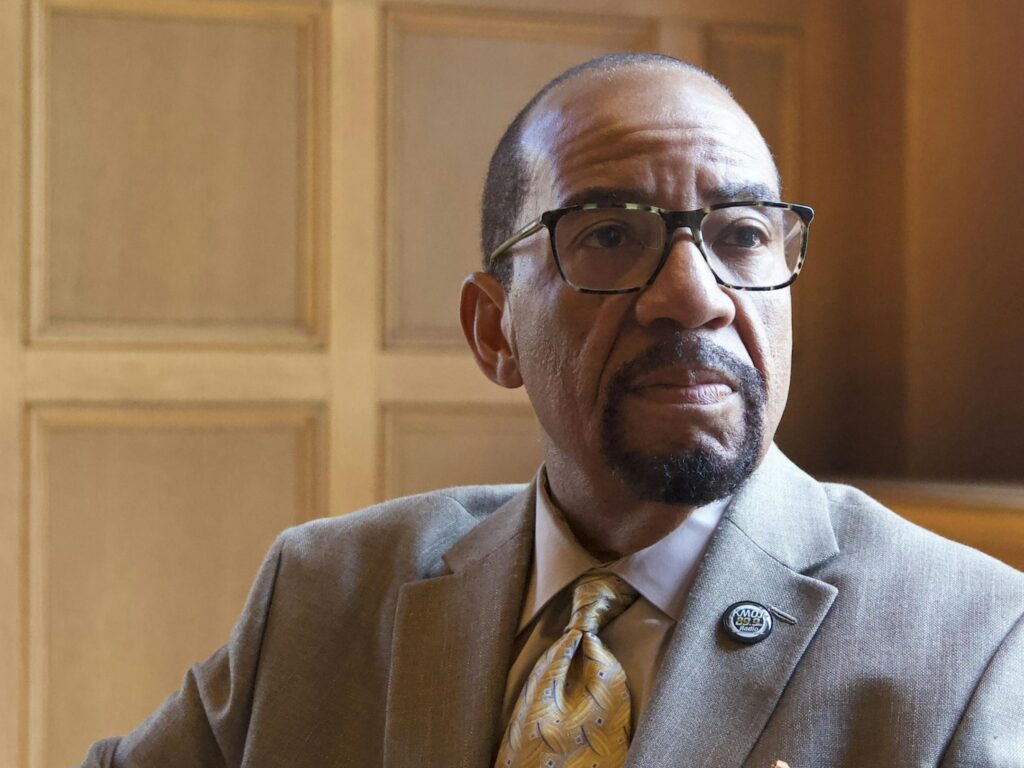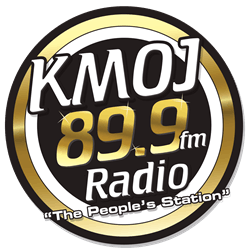
For decades, the Minneapolis station has been a vital hub for Black Minnesotans.
The Minnesota Star Tribune
If you sift through the YouTube archive of grainy Minneapolis videos from the 1990s, you’ll find a news clip about Prince playing a surprise concert.
The goal? To raise more than $30,000 for KMOJ, the local radio station that has aired great music and centered the Black community in the Twin Cities for decades.
“He’s bad,” Walter “Q Bear” Banks Jr. said about Prince in the clip. “He’s the man.”
It’s unfair to just call KMOJ a radio station, though. Sure, you can hear great music, especially old school R&B and hip-hop, and also compelling dialogue about issues that impact Black folks locally. That’s been the reality since the station’s inception in 1976. But KMOJ is more than a radio station — it’s an institution.
And it needs help to survive and thrive for years to come.
The Metropolitan Council is expected to employ eminent domain to demolish the station’s location in the Five Points Building on the corner of West Broadway and Penn Avenue in Minneapolis, as construction of the Blue Line light rail begins in the years ahead, said Freddie Bell, the station’s longtime general manager.
But a $17 million capital campaign aims to help the station secure a nearby plot of land to build a headquarters for the voice of the Black community for years to come.
“We’ve identified the land in north Minneapolis, which is important,” Bell told me. “And the capital campaign has been quietly going on, but we’ve pulled the covers back and we’re ready to share it with the community at-large, so it’s a little unorthodox in that we’re looking for the bigger donors as well as the smaller donors together because where I come from, every dollar counts. ”Bell said the station has some runway — its lease with the Five Points Building ends in 2030 — but the dollars necessary to complete the project will be vital for its future.
Let’s go back to the idea of KMOJ as an institution.
As I tried to understand the Twin Cities and its Black community when I first moved here , KMOJ was an important portal for me. It’s always been a station that featured conversations about issues that became more popular to discuss after George Floyd’s murder. The station covered those issues with a nuance no other local outlet could match because it had been so comfortable addressing them over time.“It’s just so much history, not to mention the music, but the causes, the demonstrations, the interactions with police, the school board, all of that,” Bell said. “And even with the pandemic, we never stopped.”
The Minneapolis music scene has been adored by fans around the world. And many of the local Black artists — Prince, Jimmy Jam, Morris Day and the Time, Lizzo and others — who subsequently earned national acclaim were already staples on KMOJ before the world met them.
That’s a legacy that can’t be ignored.The capital campaign would do something that rarely happens in this town: preserve an important Black institution.
I told Bell that I could not stop thinking about the irony of KMOJ losing its leased home in the same state that ruined a prominent Black community in the Rondo neighborhood when Interstate 94 tore through it. While St. Paul’s Rondo is often cited as this area’s greatest disruption of a Black community, a thriving Black business district in south Minneapolis likewise was ruined by the construction of I-35W.
“It’s tough not to think about that,” Bell said. “I drive I-94 every day, literally every day, and go past the Penumbra Theatre and the Rondo neighborhood. I can’t help but think about it every day.
“And I remember Arnellia’s on University Avenue, and it’s not there anymore for a lot of different reasons, but the light rail played some role in that as well.
“And I think about the businesses along Broadway,” he continued. “What will happen to those businesses and those homes?”
Bell, however, is focused on the futureHe said his faith is fueling his optimism for KMOJ’s next chapter. Yes, they’re a long way from the $17 million they want for a permanent building, as they’re only in the beginning stages. But Bell said he believes it’s going to happen, while also acknowledging they’ll need more cash from listeners and supporters to complete his vision.
“I’m seeing it as if it’s already done,” he said. “And maybe that’s discoloring a little bit about the reality, but I see the reality before it happens.
“I see this two-story, 10,000-square-foot structure with a special entrance for the community, a special entrance for the volunteers and the staff. I see the next generation of general managers and program directors. I mean, I’ve already seen it.”
Now Bell just hopes the community will fund it.

